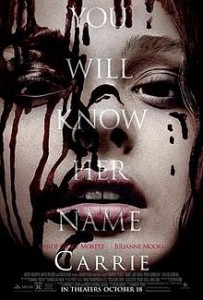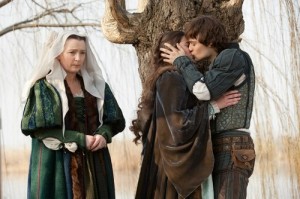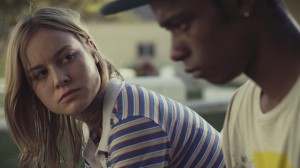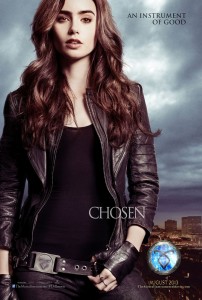Carrie
Posted on October 17, 2013 at 5:50 pm
The remake of “Carrie” is not a bad movie; it’s just a completely unnecessary one. The 1976 original is a horror classic, directed by Brian de Palma and the first film based on a novel by Stephen King, just 26 years old when he sold the rights for $2500. Both of its stars were nominated for Oscars, almost unheard of for a genre film, and it is number 46 on the American Film Institute’s list of the top 100 thrillers.

The idea of updating the story of the bullied high school girl to the era of Facebook and YouTube had some intriguing possibilities, especially directed by Kimberly Peirce, whose extraordinary “Boys Don’t Cry” had an insightful authenticity in the portrayal of young people who felt like outsiders. But there is nothing especially timely, revealing, or surprising in this remake. The performances are not up to the level of the original and even the special effects do not seem much better than those in the version that came out when Gerald Ford was President.
Less than a moment into the film, we are already immersed in blood. We hear screams and we see a Bible. Margaret White (Julianne Moore) is in bed, the sheets all bloody, moaning and praying. She thinks she is dying and she thinks it is because she is being punished. But the pains she feels are contractions and she is shocked to find a baby emerging from her. At first, she wants to kill her new daughter with her sewing shears. But she loves the newborn too much to hurt her and, as we learn, she sees the baby as another chance for her to be pure, to be kept safe from the predations of sin and the devil.
We then see Margaret’s daughter, Carrie (Chloë Grace Moretz of “Kick-Ass” and “Let Me In”), a shy, repressed, somewhat backward senior in high school and ignored or insulted by the other girls. She gets her period for the first time in the locker room after PE and becomes hysterical. Like her mother, she has no idea what is going on with her body and she thinks she is dying. The other girls are horrified that she is so ignorant and make fun of her, throwing tampons and sanitary napkins at her. Chris, the ringleader (Portia Doubleday) gets it all on her cell phone camera and uploads it to YouTube.
Margaret seems to think that if she had been able to keep Carrie “pure” she never would have gone through puberty. She locks Carrie in a small closet under the stairs and tells her to stay in there and pray.
But puberty seems to have unlocked some special powers in Carrie, powers that seem tied to her emotions. As she sits in the principal’s office, his water cooler bubbles and then explodes. Carrie gets books on miracles and telekinesis from the library and begins to see what she can do and how much she can control. For the first time, she begins to sense some independence and to rebel against her mother.
Sue (Gabriella Wilde) feels guilty about her role in making fun of Carrie and asks her boyfriend, Tommy (Ansel Elgort, soon to be seen in both “Divergent” and ‘The Fault in Our Stars”) to invite Carrie to the prom. She says no at first, but then accepts, and his kindness and courtesy make her feel appreciated for the first time. Until….
And that’s the thing. Everyone knows what happens at the prom. It is one of the most famous images in cinematic history. This replay adds nothing new.
Moretz is a thoughtful and serious young actor, but she is better at playing a precociously sophisticated and capable character like Hit Girl or even the friend of the Wimpy Kid than she is at trying to show us the innocent and vulnerable Carrie. More at fault is the script, which fails to provide a consistent emotional truth for the character. Like the Hulk, her powers are rooted in fury. King, even in his 20’s, knew how satisfying that would be for everyone who has been picked on (that is everyone), and Moretz is at her best when enjoying the sense of righteous revenge. To make the movie work, though, that would need to be balanced by an underlying sense of the character that is never there. The same goes for Margaret. In 2013, the thoughts of a religious fanatic open up some possibilities worth exploring but Peirce is more interested in re-creating the original than updating it.
Parents should know that this film has extensive and graphic peril and violence with many characters brutally killed, disturbing and bloody images, sexual references and situations involving teenagers, a graphic childbirth scene, teen drinking, and strong language.
Family discussion: Why were the girls so mean to Carrie? How has bullying changed since the story was first written? How did Carrie feel about her powers and why?
If you like this, try: the original film and some of the other Stephen King adaptations like “The Shining” and “Sleepwalkers”




